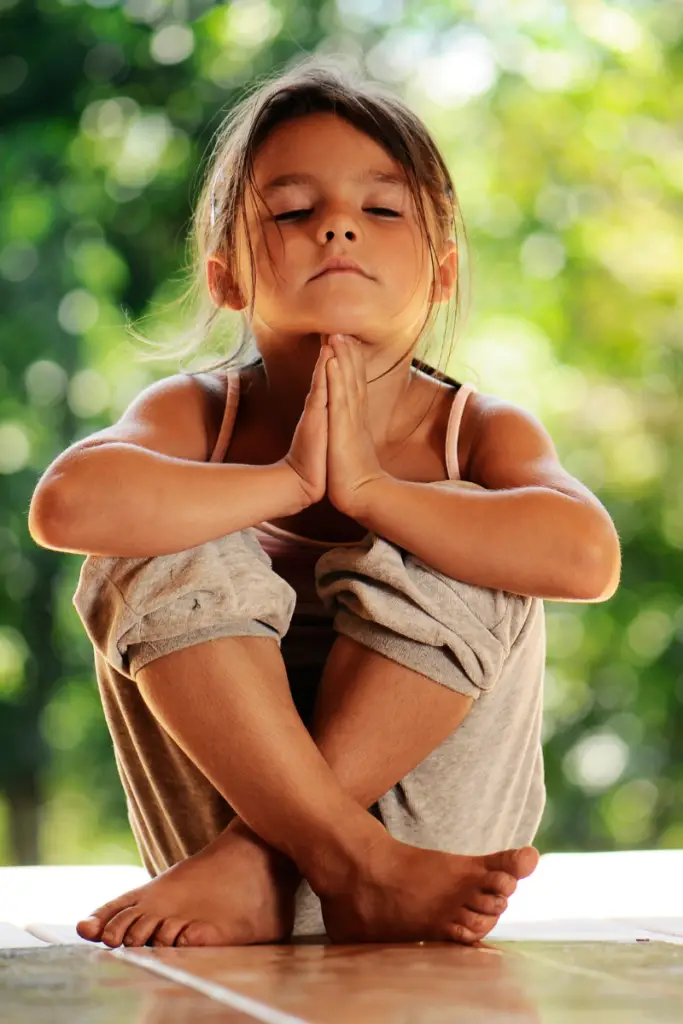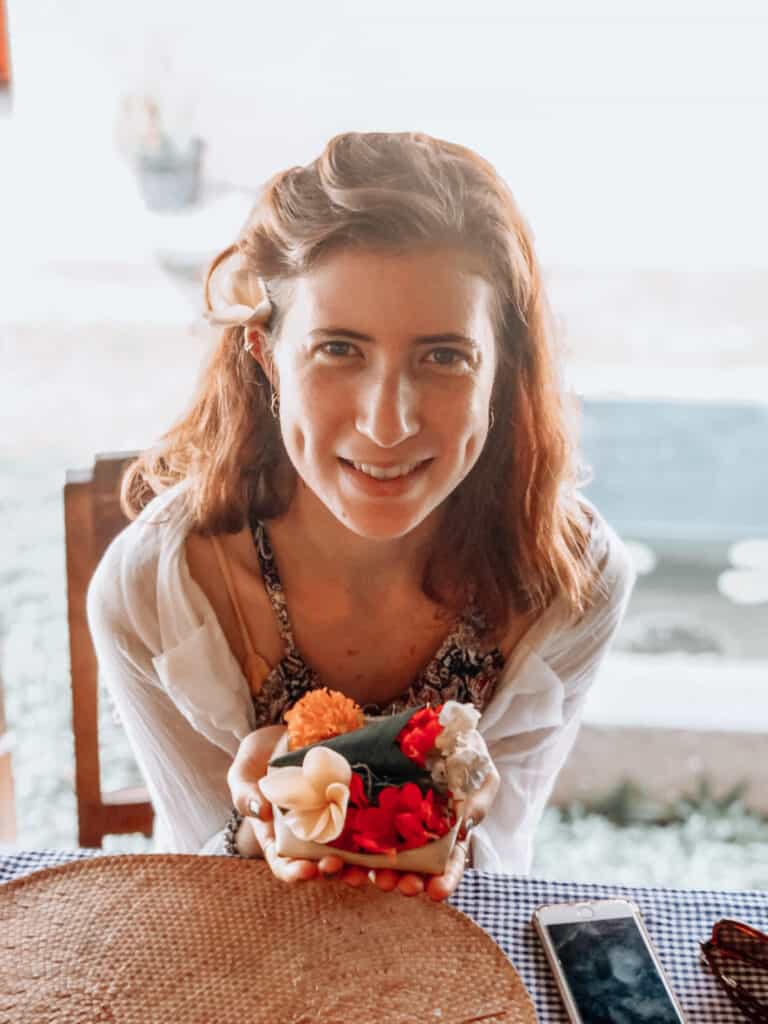How a meditation practice can help kids become less anxious and more focused

How to teach your kids about meditation
Mindfulness for Children – Meditation for Children Behavior
The practice of forming an accepting attitude to the present moment can be used by children of all ages. It can relieve stress and promote happiness, not only for the child but for parents and caregivers too. There are several ways to be mindful which develop compassion, focus, curiosity, empathy, and many other skills to develop emotional intelligence in children. Mindfulness can be enjoyable – it shouldn’t feel like a task to tick off your to-do list!
Mindfulness can help decrease anxiety and increase happiness and has a great effect on brain development from early life stages.
The programming of a child’s brain:
As children we are the most malleable concerning our mind and brain development – between the ages of 0 to 7 years we are the most ‘absorbable’ towards information as our brains are constantly developing new neurons and creating new neural connections – this is known as our ‘programing years’. We build skills and knowledge faster therefore we can greatly influence our mindset and how we psychologically process things.
This is due to children between these ages operate mostly on Theta and Alpha brainwaves. During these years, our children will spend most of their time in Alpha and Theta brainwaves – the same brainwaves that are associated with a hypnotic or meditative state. They are hyper-aware of their surroundings and very open to learning and suggestions.
These are the years when we take on beliefs, about ourselves and life, and many of these will remain unconscious throughout the rest of our lives, though they will show up in our behaviors, our achievements, our goals, how we choose our friends, our life partners and so on.
The different stages of brainwaves in children:
Delta:
Known as the deep sleep or rest stage. Mostly prevalent between ages 0 – 2 years and primary function occurs within on a subconscious level. Little judgment and critical thinking occur here.
Theta:
Occurs most prevalent between the ages 2 and 6 years. The internal connection to their selves, their mind, and their imagination are very strong in this stage. Critical thinking has still not been developed. This stage is when they absorb the most information and form many of their beliefs according to what they are told. It is a super learning state.
Alpha:
Prevalent between the ages of 5 to 8 years. Critical thinking and opinions start to form. They are now equally aware of their outer worlds as much as their inner worlds. Their reality is based on these judgments. This is comparable to people that meditate – they feel both relaxed yet alert to their thoughts. This is where most creativity and learning ideas evolve by connecting and tapping into the alpha brainwaves.
Beta:
From age 8 into adulthood is where the beta brainwaves take over. This is the fastest brainwave frequency and leads to analytical thinking. Commonly seen as the ‘busy brain’.
Between the ages of 0 to 6 is a crucial time for our children to develop positive beliefs about themselves. Teaching them about mindfulness is one of the biggest tools you can give them to instill a positive and empowering belief system.
A belief begins as a thought. It is simply a thought, that you keep thinking and practicing. What you think formulates your reality and your beliefs then show in your actions.
The thoughts you formulate as truth when you are a child shows up within your beliefs surrounding yourself and the world when you are an adult.
It is just a story you have told yourself, it is not real until you make it so.
Meditation allows you to formulate new thoughts and change these thinking patterns.
How Brain Connections Are Built
Starting from birth, children develop brain connections through their everyday experiences. They’re built through positive interactions with their parents and caregivers and by using their senses to interact with the world. A young child’s daily experiences determine which brain connections develop and which will last for a lifetime. The amount and quality of care, stimulation, and interaction they receive in their early years make all the difference.
https://www.firstthingsfirst.org/early-childhood-matters/brain-development/
Does meditation and mindfulness for children really help?
How It Helps
We are born with adversity. At every stage of our lives, we face certain challenges. From when we are born, to being a child, then a teenager, and finally an adult. Developing relationships, navigating school, and exercising independence are all stress-inducing.
The basics of meditation and mindfulness practices can help us in life through all the different obstacles we might face – reducing stress and inducing happiness.
Mindfulness techniques highlight cultivating focused attention to the present moment and learning to treat our thoughts without judgment but instead with acceptance. It has become popular as a practice in adults but also teaching it to toddlers and children.
Practicing and learning about mindfulness early on in life sets us up for an aware and purposeful future. It teaches us many fundamental skills that we can carry on into adulthood – many skills that people only learn later on, which might set them back in coping with various situations.
The nature of copy-catting
It isn’t something that can be done by third parties. The best way to teach a child to be aware is for the adults or parents to embody it themselves.
Being a parent is an incredibly demanding job. It can be beneficial for caregivers to share the skills of happiness and acceptance with a new generation, as well as take better care of themselves.
What are the benefits of meditation for kids and what do they learn out of it?
Practicing mindfulness from a young age creates a great foundation for consciousness and awareness in adulthood.
21 concepts and skills that are developed during meditations for kids:
1. mindfulness
3. relaxation
4. stress management and self-management
5. anxiety reduction – coping mechanisms
6. self-awareness
7. focus
8. concentration
9. effects on attention
10. awareness
11. calmness
12. peace
13. happiness
14. tranquility
15. serenity
16. inner stillness
17. quietude
18. silence
19. contemplation
20. reflection
21. introspection
Benefits of meditation for adults
Additional benefits of kids meditation include:
- Can help with sleep training for toddlers to create a set sleep or bedtime routine
- Decreases restlessness and can help with symptoms of Attention Deficit-Hyperactivity Disorder (ADHD)
- Increase in focus and attention span
- Develops their brain – increase learning capability
- Increase in overall happiness
- Empowers a young child to grow their own intuition so that they learn to know themselves from a young age – this makes decision making easier
- Develops clarity in direction for their lives and what they want to contribute to it
- Learns emotional intelligence and how to deal with all emotions as well as how to regulate them – in order to respond to an experience rather than reacting eg. tantrums in childhood and outbursts in adulthood
- Develops compassion and empathy with enhances their social skills
- Stabilizes mood and eases anxiety and stress that comes from growing up
Best Mindfulness Meditation for Kids
8 Mindfulness Practices Most Suitable For Children – Mindfulness for Preschoolers
1. Listen to the bell
Ring a bell. The kids should be asked to listen closely to the ringing sound of a bell. When they can’t hear the sound of the bell, raise your hands and remain silent. After the ringing has stopped, tell them to remain silent for one minute and pay attention to what they hear. Ask the kids to tell you every sound they heard during that time.
2. Mindful breathing: Breath-with-a-pal
Each child will get a stuffed animal to play with. The children should lie down on the floor and place their stuffed animals on their bellies. Tell them to breathe for one minute and notice how their pal moves.
Tell them to imagine that their thoughts turn into bubbles. The presence of the stuffed animal allows the kids to see that a playful activity doesn’t have to be rowdy, and makes the meditation a little friendlier.
3. Squish and squash
While the kids are lying down with their eyes closed, have them squeeze every single muscle in their bodies as tightly as possible. Tell them to raise their shoulders, tighten their legs all the way up to their hips, suck in their bellies, and put their hands into fists.
Have them hold themselves up for a few seconds, and then relax. This activity is a great way to “loosen up” the body and mind, as well as getting the kids to understand the concept of being present.
4. What’s that smell?
Pass an object to each child that has a very strong scent. Ask them to close their eyes and breathe in as much of the smell as possible and become completely focused on the smell. They can even try and guess what the scent is for extra fun!
Objects with strong fragrances can be a great tool to relieve anxiety such as lavender or chamomile flowers.
5. Touch and hold
Pass an object to every child – something with a distinct texture. Allow them to close their eyes and describe the object to the group. Children are taught to separate their senses from one another and this type of exercise can be done with each of the senses. Focusing on one sense at a time is a great way to practice presence.
6. Hands on your heart
Ask the children to close their eyes, put their hands on their hearts, and feel how their hearts beat. Now ask them to do the same by feeling the heartbeats of each other. Ask them to notice any other sensations like the way they are breathing.
7. Balloon Belly Visualization
This guided meditation brings a visual component to the children’s deep breathing exercise
“Take a slow, deep breath in through the nose to fill your belly – blow up your belly like a helium balloon
Hold your breath for a second
And a slow breathe out – imagine your balloon deflating”
Encourage them to relax each time they exhale.
8. Guided Progressive Muscle Relaxation
Lie down and close your eyes
Move slowly up and around the body, squeezing one part at a time and then release all the tension suddenly
When you’re finished with the relaxation technique, encourage your child to spend some time in quiet.
Mindfulness for kids can have a huge positive impact on society as a whole. Schools, globally, are taking it upon themselves to teach mindfulness-oriented meditation lessons to children and toddlers, as a daily routine, as they have come to realize the huge impact it can have on not only the children’s futures on a personal plane but also the future of society for future generations.
It is also a win-win, for the adults teaching it to the children, as the best teacher is the act of teaching itself. Through teaching children mindfulness practices the adults or parents become more mindful themselves.
For instance, the more children are taught awareness, kindness, and compassion towards self and others the less bullying would occur and ultimately mental illnesses such as depression, anxiety, or eating disorders could be avoided. Happier children make for happier future generations and ultimately a happier society in general.
All in all, it’s important to teach mindfulness skills early so that these habits will stick throughout childhood and beyond.


